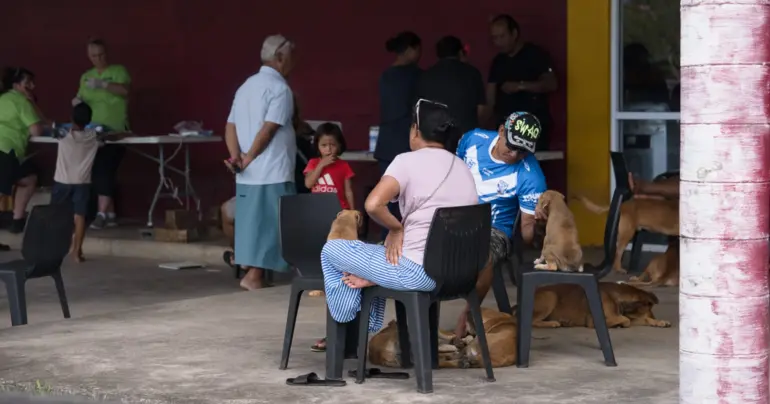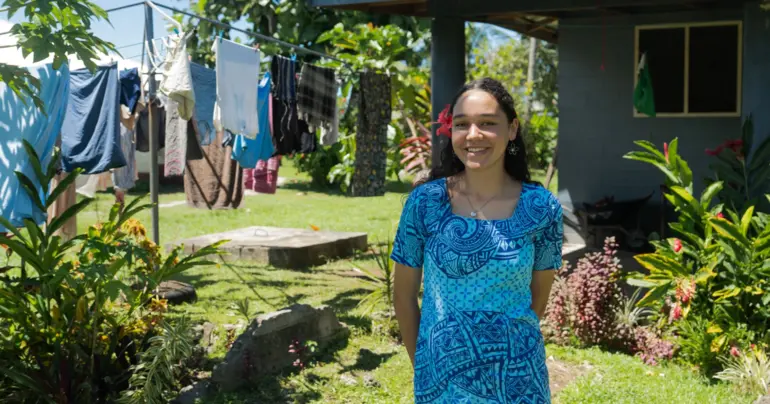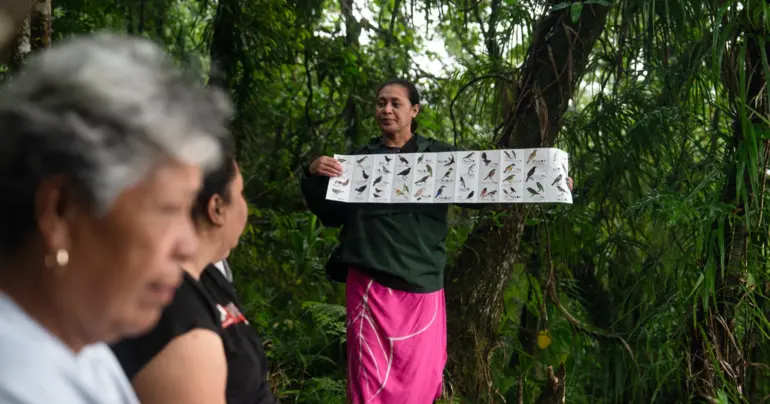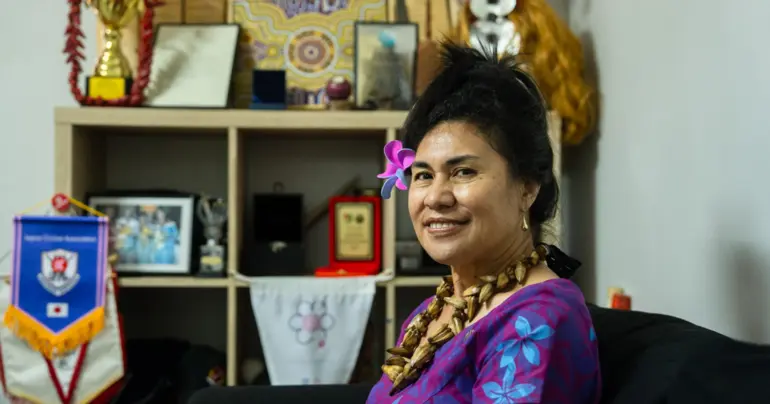Untapped shell market could double export value
 By Adel Fruean
•
21 September 2021, 1:00PM
By Adel Fruean
•
21 September 2021, 1:00PM
A report has revealed that the potential value of shell exports from Samoa is forecast to reach $1.3 million or almost double the present income generated by the nation's fishers.
The potential of the export market was forecast in a final report on a project titled: "Reef colonisation and socioeconomic impacts from trochus translocations to Samoa."
The trochus is a large 'topshell' marine snail, economically important in the Asia-Pacific region because of its thick shell and pearl nacre. Its flesh can be eaten and sold locally; polished shells and jewellery made from the shell can be sold locally; and the raw shells can be exported to manufacture high-fashion buttons.
A.C.I.A.R. established trochus populations on Samoan reefs starting in 2003. The aim was for the animals to breed naturally so the offspring would colonise other reefs.
The report was prepared by Steven Purcell and published by the Australian Centre for International Agricultural Research (A.C.I.A.R.) in June 2021.
Support for the project work was provided by Southern Cross University and University of Wollongong, Australia, and the Ministry of Agriculture and Fisheries, Samoa.
The aims of this project were to assess the extent of establishment of trochus on Samoan reefs, to understand the factors that affect the trochus captures by fishers, to assess the socioeconomic impacts of the trochus fishery, to build capacity in value-adding of trochus shells in Samoa and to reveal the potential for exporting trochus sustainably.
This project aimed to evaluate the consequences of past A.C.I.A.R.-funded translocations of trochus to Samoa and enable maximum benefits from the fishery.
Furthermore, the report Fishers sell the flesh and do not profit much from value-adding the shells. The Ministry of Agriculture and Fisheries has not yet allowed exports of trochus, partly because information about the fishery is incomplete, so the animal's full economic value is underused.
The project informed policies for managing the fishery and decisions about exporting trochus through better understanding trochus stocks, fishers and fishing activities.
It also identified regions in Samoa that might still need stocking, and helped A.C.I.A.R. and other donor organisations to diversify smallholder fisheries in developing countries.
The project improved incomes to villagers who sell trochus products, and sustained revenue to rural villages through better-informed fishery management. The new pathways could allow fishers to double the income they make from harvesting trochus.
According to the report, a majority of fishers consumed part of their catch and shared harvests within communities using informal distribution networks.
“Trochus was the second-most harvested resource (after fish). The fishery was largely gender equitable—fishing efficiency, catch diversity, fishing income and perspectives about stocks were similar between men and women fishers.
“However, trochus tended to be more important in the catches of fisherwomen. These findings urge for an equal representation of women in the decision making in small-scale fisheries; e.g., in consultation meetings and industry bodies.
“The fishery has an extremely modest carbon footprint (20 tonnes CO2 annually).”
In addition, the fishery nurtured positive wellbeing outcomes that were inclusive among age groups and genders.
“New income from the fishery was most often spent on food, church tithing and school fees. Extrapolations of annual incomes across the fishery revealed a rapid return on investment from the earlier ACIAR project to introduce trochus.
“Data indicate that around 7 million trochus were harvested in Samoa in 2018. Sales of trochus meat generated income to at least 1000 Samoan village fishers nationally of around AU$800,000 annually.
“Approximately 260 tonnes of legal-sized trochus shell (90–120 mm diameter) were harvested that year, which could serve in exports to increase the value of the fishery.”
The report further states that, “we trained 42 village-based artisans in the four one-week workshops.
“They made necklaces, key chains and earrings from trochus shells. Many of them were interested in handicraft making as an alternative livelihood activity.
“M.A.F. has set up one station at the village of Asau (Savai’i Island) and will set up machines at two other stations so artisans can access them to make handicrafts from trochus shells.
“The fishery is truly an inspiring success story of rural development through Australia’s foreign aid program. The introduction of trochus has provided a significant alternative livelihood and source of food for over 1000 fishers, in an era when seafood supply in the Pacific is under threat.”
Also the report revealed that the fishery is gender equitable, with women and men catching a similar amount of trochus per day, similar income for their catch, and reporting similar satisfaction and perceptions about the fishery.
“The majority of fishers believed that trochus numbers were increasing on reefs in Samoa.
“The Samoan trochus fishery management needs to be implemented. The regulations include a ‘slot’ size limit of 90–120 mm shell diameter, collection during daytime only, the potential to set seasonal fishery closures, and export licences (if exports are allowed).”
 By Adel Fruean
•
21 September 2021, 1:00PM
By Adel Fruean
•
21 September 2021, 1:00PM











